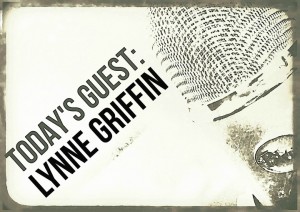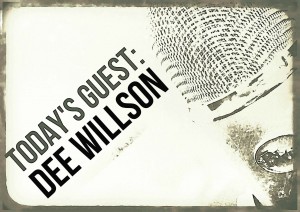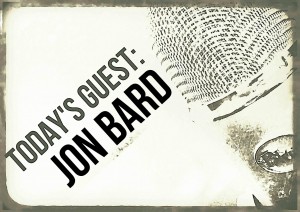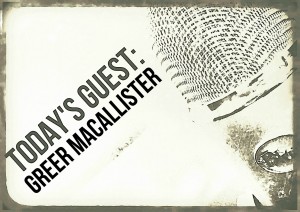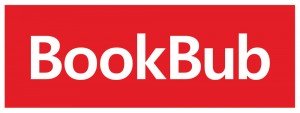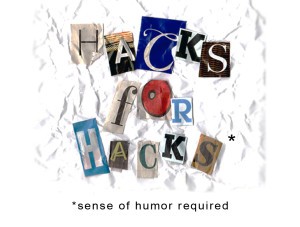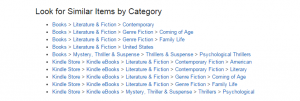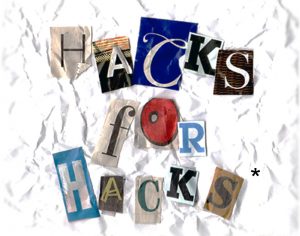Marketing
Our guest today is Lynne Griffin, author of the family-focused novels Girl Sent Away, Sea Escape, and Life Without Summer, as well as the nonfiction parenting guides Let’s Talk About It: Adolescent Mental Health and Negotiation Generation—Take Back Your Parental Authority Without Punishment. Lynne is a counselor who teaches family studies at Wheelock College, and she is the Social-Emotional Learning Specialist and Coordinator of Parent and Professional Programs for an independent school in Boston. She teaches fiction writing at GrubStreet in Boston and facilitates their program for soon-to-be published authors called Launch Lab.
Whether you’re closing in on a final draft or about to launch your novel, you will need clarity about what makes your novel stand out from other fiction on the market.
Connect with Lynne on Twitter, on Facebook, and on her website.
Standing Out on the Crowded Shelf—How to Help Your Fiction Find an Audience
For the novelist, the first introduction to the concept of the “crowded shelf” usually comes in the form of a rejection letter. I don’t know a writer who hasn’t been told that their story simply won’t stand apart from other works of fiction on the market. Yet even when you find your champion—the agent or editor who believes in your story enough to bet on it—you’ll still be asked to play a leading role in positioning your novel for discoverability.
Likely you’ve heard writers lament about the high expectations publishers have for today’s author, to participate in (or some cases own) the publicity and marketing efforts related to their novel. Very few writers can pull a Salinger or a Ferrante, getting away without promoting their work at all. But instead of focusing on the good ole days of publishing, when someone other than you lined up book events or secured interviews and profiles, I urge you to turn your attention to the things you can do to position your novel to stand out and find an audience.
Your Intent
Begin by reflecting on your top two or three goals for your novel. Whether you want to entertain or enlighten certain readers or you have something to add to a particular discussion, be sure you have clarity around your intentions. If you don’t know what you’re after, it will be difficult to create a campaign to reach the right readers. For my new novel Girl Sent Away, I knew I had a lot to say about the crisis in our adolescent mental health system. By articulating my mission to create a conversation around building resilience and nurturing empathy—really owning what I had to contribute—I was able to outline my novel’s key themes. Honing my message allowed me to imagine the communities of readers who might be interested in joining the conversation.
Believe it or not, another way to get at your novel’s uniqueness, is to identify its competition.
Read MoreOur guest today is Dee Willson who felt the writer’s call at fifteen, when she penned her first novel and received her first rejection to go with it. Over twenty years later, Dee Willson has published short stories, interviews, contributed to blogs, and wrote the soon-to-be-released novel A Keeper’s Truth. She currently resides in Burlington, Ontario, with her husband and their two daughters.
I find it hard, sometimes, to wear two different hats. I’m often envious of friends who can devote the bulk of their time to their craft, to writing, and sometimes wish I could do the same. But wearing a corporate hat has its advantages, and the vantage points are unique. I’ve learned a lot, and enjoy the prospect of sharing my experience with my friends at Writer Unboxed.
Connect with Dee on her blog and on Twitter.
Two Hats, One Woman
In the Writer Unboxed universe, I wear a bright yellow hat. It’s fringed and funky and doesn’t match my corporate attire, but it’s ME, if you know what I mean. It’s my writer hat, the one that screams in bold, has my heart embroidered on the brim, and makes the sun shine on the dreariest of days. I love this hat.
I also have a grey hat. It fits well—all prim and proper—at home in the corporate boardroom. In it I feel professional, experienced, a woman with a head for industry on a large retail scale. I love this hat, too.
Two hats, one woman.
What does this mean in regard to writing? Well, it means my path to publication came with two hats and no dress-up instructions. And believe me, the combination is not always pretty, but I’ve learned a few things from each. I’ll use the four P’s of marketing to bring things into focus.
Product
Seven years ago, when I first donned by funky yellow hat, I sat at my computer and let a story pour out. It was a ten-week whirlwind that had me laughing, crying, dancing in the streets, and when it was over, I had A Keeper’s Truth, my first novel. The feeling was exhilarating, and I cherished this yellow hat like no other.
Read MoreLooking for the Lingo
The audience at Frankfurt Book Fair’s Business Club listens to AmazonCrossing’s Sarah Jane Gunter talk about her program’s new open-submissions program. Image: Bernd Hartung for #FBM15
The first thing Bloomberg News’ Allesandro Speciale wanted to know when he sat down to interview me here at Frankfurt Book Fair’s Business Club is: “Is translation as big an issue this year as it seems?”
Answer: yes. As the glut of content in the book marketplace deepens, what could be more natural than to look to distant readerships for new sales?
Canelo publisher Michael Bhaskar said it in starkly frank terms during his onstage interview with me yesterday, Thursday:
There are too many books.
He’s right. The digital dynamic, in both the traditional and self-publishing sectors, has created an historically unprecedented level of competition among titles, among authors, among publishers. While the number of titles out there has exploded (with nothing going out of print nowadays, “digital is forever”), the audience size has not. For the most part, we’re producing exponentially more material for a readership that largely has stayed the same size and is being wooed by other electronic entertainment media.
Nowhere is the pressure of oversupply felt more keenly than in the strongest centers of self-publishing, the US and UK and, to a lesser degree, here in Germany.
The subject of how independent authors might go about finding affordable and reliable translation was big in our First Word day on international outreach at the Novelists Inc. conference earlier this month in St. Pete Beach. There, Jane Friedman focused on input from LiteraryTranslations’ Athina Papa, something Friedman and I returned to in The Hot Sheet on the topic.
Even for publishers, translation is no walk through the park. And for many independent authors, the $10,000 price tag that Papa quotes as the ballpark rate for a good translation is impossibly steep.
No wonder, then, that the news from AmazonCrossing has been so well received, and particularly by authors.
AmazonCrossing is the translation imprint of the Amazon Publishing wing—not self-publishing but contracted authors and translators (all of whom are paid royalties and on a monthly schedule, by the way, reflecting one way in which “APub” is not entirely traditional in its approach).
As I wrote at The Bookseller’s The FutureBook earlier in the week ahead of my onstage interview with AmazonCrossing chief Sarah Jane Gunter, the company has announced a $10 million commitment to translation.
A part of that allocation goes to the production in early 2016 of English translations of Indonesian writers, including (from the AmazonCrossing statement):
Read More
“Dear publicist, My book just released and I’d like to promote it. How can you help?”
“Hi! My novel came out last fall and sales have been close to zero. Can we talk about what your firm can do to promote it?”
Ouch! These emails break my heart.
I typically get about two like this a day asking for help with a book that has already released. Or is releasing next week. Or tomorrow. Sadly, in those cases there’s a lot less I can do than I could have two or three months earlier.
That’s because the work of getting a book onto the radar screen of people in the media who will review it, blog about it or interview its author must absolutely begin well in advance of publication.
I know it sounds counterintuitive: at long last a book has hit the market, it’s time to tell the world! But in fact, this is a far cry from how things work on the back end.
To understand why, we need to get inside the minds of the people on the back end — those who will be writing those reviews, conducting those interviews or publishing your blog posts. In order to even consider a book for coverage, the person doing so usually needs to read first, and then craft a thoughtful news item about it — whether that’s a review, a feature story or an author Q&A. He or she will also have to get the news item approved and possibly revised by an editor, who’s equally swamped and running chronically behind. And chances are, said person already has a pile of about 20 other books to read or consider first. It’s not unlike the process agents go through where their slush piles just keep growing but there are only so many hours in a day.
Yet this is completely at odds with the imperatives of organizations offering coverage such as magazines, newspapers, radio stations and sites like The Huffington Post. These organizations are news outlets. So are may blogs, including book blogs. By definition, news is information about what’s new. Take a look at your daily newsfeed, or turn on the evening TV news: each article or story contains information or commentary relevant in some way to an event that has taken place that very day, or to one that took place very recently and is still being buzzed about. So news outlets have to give priority to what’s new or timely.
Read MoreToday’s guest is Greer Macallister, a poet, short story writer, playwright, and novelist whose work has appeared in publications like The North American Review, The Missouri Review, and The Messenger. Her plays have been performed at American University, where she earned her MFA in Creative Writing.
Her debut novel, The Magician’s Lie, was selected as a monthly or weekly pick by — deep breath here — Indie Next, Library Reads, She Reads, Midwest Connections, Publishers Weekly, and People magazine. The Washington Post raved, “Macallister, like the Amazing Arden, mesmerizes her audience. No sleight of hand is necessary. An ambitious heroine and a captivating tale are all the magic she needs.” The Magician’s Lie will be available in paperback on October 6, 2015.
You can connect with Greer on Facebook and Twitter.
Judging a Book By Both Its Covers
Rightly or not, we all judge a book by its cover. But for some books it isn’t that simple, since the same book can have more than one cover.
I can’t take any credit for the covers of The Magician’s Lie – on tour to support the hardcover launch earlier this year, I often joked that my involvement with the drop-dead gorgeous image on the right was limited to saying “yes” when they showed it to me.
I loved everything about it. The dark red of the dress, the evocative image of the dove (appropriate both for the stage magic that forms the heart of the story and the idea of innocence), its overall impact and simplicity. I felt lucky, and away we went.
But when you’re lucky enough to have a book launch in hardcover and then move to paperback, the initial cover isn’t the end of the story. When I was told that the cover might be changing for the paperback, I was downright nervous. I didn’t see any way that another cover could capture everything else I wanted a potential reader to know about the book. And then they showed me the image on the left…
Read MoreIf you missed Part 1 of my interview with BookBub’s Industry Marketing Manager–or if you have no idea what BookBub is–click HERE, then come back. Today I’ll wrap my two-part interview with BookBub’s Diana Urban.
But first… Something unexpected and fortuitous happened on the way to seeing this interview published. My publisher, Crown, decided to run a BookBub on my second novel, The Moon Sisters, and initiated a temporary price drop. That BookBub goes live today, so I orchestrated things here at WU so this post could go live today, too.
‘Show don’t tell,’ right?
Below is a screen capture of stats for The Moon Sisters on Amazon, taken on 9/17, the day before the BookBub. Just so you have all of the facts, my Amazon rank before the e-book was put on sale on 9/13 was 240,000. It dropped to about 6,000 after the sale began and I ran a BookSends promotion. I’ve also promoted over social media, but nothing too extravagant or repetitive.
This is where things stood on Barnes and Noble as of 9/17:
This is the second time Random House has run a BookBub for The Moon Sisters. The first time was very succesful–the eBook reached #10 in Nook books at Barnes and Noble, and #1 in the Mothers and Children fiction category on Amazon and #116 overall. If you’d like to follow along today, you’ll see for yourself what happens to a book’s numbers on the day of a BookBub; you can watch The Moon Sisters’ pages at Amazon and Barnes and Noble. BookBub’s daily email usually lands around 10-10:30 EST, and the effect is not immediate but, well, you’ll know it when you see it.
Numbers update (9/19), for interested followers:
Within 24 hours of the BookBub for The Moon Sisters, the book reached #61 in Kindle books on Amazon (an increase of over 22,000%). It was again #1 in the Mother’s and Children fiction category, #3 in Psychological Thrillers, #3 in Coming of Age fiction, and #5 in Family Life fiction. It reached #13 at Barnes & Noble in Nook books, #13 in Kobo, and #49 in iBooks.
Without further ado, the second part of my interview with Diana Urban. Enjoy!
The Writer Unboxed / BookBub Interview, Pt 2
TW – Q16: In terms of author sales following a BookBub, is there a point where a given book, series, or author starts to experience diminishing returns with BookBub promos, and if so how can that be avoided?
BB: Each genre has anywhere from hundreds of thousands to millions of subscribers. Books sent to these massive and highly engaged lists typically experience a significant spike in downloads and revenue within the span of a few days. This often leads to increased retailer rankings, better performance in recommendation algorithms, and even hits on major bestseller lists like The New York Times or USA Today. This increased visibility usually gives rise to even more downloads from readers who find the title through these other outlets. These extra sales beyond those generated by BookBub subscribers are what we call the “halo effect.”
Independent author Cheryl Kaye Tardiff is a great example of this. Here is a graph showing book sales of her thriller […]
Read MoreWhether you know what BookBub is or you don’t, whether you have a book for sale now or are still working on a draft, whether you’re independently or traditionally published, you’re going to want to read this Q&A. First, for anyone who doesn’t know what BookBub is about, BookBub is a company that promotes quality e-books with temporarily–and drastically–slashed prices, via a daily newsletter and web updates. They are good at what they do. Very, very good. In a world where we as authors can’t be sure what will or what will not sell books, this seems one sure thing: A BookBub promotion means sales and lots of them.
How to use BookBub is something that stymies many authors I know, though, so when I noticed BookBub’s star presence at this year’s Book Expo America, I approached. That’s when I met Diana Urban, BookBub’s Industry Marketing Manager. I told her my publisher, Random House, had run a BookBub for my second novel, The Moon Sisters, which went exceptionally well. (As I revealed in an essay for BookCountry, sales for the eBook of The Moon Sisters had never really taken off. But the day after my BookBub, the eBook of The Moon Sisters was ranked #10 in Nook books at Barnes and Noble, and #1 in the Mothers and Children fiction category on Amazon.) We chatted for a bit, and then I asked if she’d be interested in doing an interview with me for Writer Unboxed. Happily, she agreed.
[pullquote]Bio Box: Who is Diana Urban? Diana is the Industry Marketing Manager at BookBub, where she regularly publishes content on book marketing, self-publishing tips, and publishing insights at the BookBub Partners Blog. She was previously the Head of Conversion Marketing at HubSpot and is an expert in inbound marketing, content marketing, and lead generation. Diana is also the author of two Young Adult thrillers, and is writing her third novel. Follow her on Twitter at @DianaUrban.[/pullquote]
I recently asked the Writer Unboxed community–mostly through our Facebook group–to chime in with any questions they had about BookBub, and many of those questions are reflected here. So let’s get to it–part 1 of a two-part interview.
The Writer Unboxed / BookBub Interview, Pt 1
TW – Q1: It’s the prevailing opinion that BookBub is unique among a pool of book-promotion services, in that it seems to move the needle in a much more significant way and have a lasting sales impact on the books that are promoted. Why do you think that’s the case?
BB: One of our core goals has always been to provide authors and publishers with a way to run book marketing campaigns that drive real, measurable results. We’re a data-driven company, so every decision we make — from the categories we launch to the new members we acquire — is based on the results of rigorous testing and analysis, which helps us ensure that BookBub continues to be effective at moving the needle for our partners.
BookBub is also unique in that we’re providing curated recommendations to millions of loyal power readers who have specifically opted into genres they’re interested in reading. Our partners […]
Read MoreWarning: Hacks for Hacks tips may have harmful side effects on your writing career, and should not be used by minors, adults, writers, poets, scribes, scriveners, journalists, or anybody.
Here’s the good news. You’ve sold your book! The bad news: Your publisher needs a photo of you for the jacket. Now before you get mad that I’m calling you ugly, rest assured I’m not. All I’m saying is that you’re an incompetent photographer who doesn’t know the difference between focus and an F-stop (or whether that analogy I just made even uses real photo terminology).
I talked briefly about author photos before, but now I’m sharing the primo tips that’ll mean the difference between looking like a successful famous author, or some poseur who ironed some elbow patches onto a thrift-store suit jacket.
[pullquote]Any reputable photographer should be able to guarantee you’ll get some action as a result of this photo.[/pullquote]
What is an Author Photo?
Let’s start with why we’re going through this rigmarole. An author photo is a selling tool designed to let your fans know what you look like so they can properly throw themselves at you when they see you. To do that, you’ll need to…
Hire a Photographer
No, that blurry selfie you use for your Twitter avatar isn’t going to cut it. It’s time to go to a professional. That means someone with AT MINIMUM 500 followers on Instagram. This will not come cheap, but it’ll be the best twenty-bucks-plus-a-case-of-Pabst you’ll ever spend.
[pullquote]It’s time to go to a professional. Look for someone who has AT MINIMUM 1,000 followers on Instagram.[/pullquote]
Any reputable photographer should be able to guarantee you’ll get some action as a result of this photo. Ask them about this specifically.
Set the Mood
The best time to take a photo is during the “magic hour”–the time just before sunset, when the light is redder, softer, and more flattering. Basically, around happy hour. Knock back a couple brewskis in during the shoot to turn yourself from a dour, desperate, struggling writer into a delightfully eccentric raconteur.
Read MoreI’m going to wear a different hat today than I usually do. (You can’t see me, but I’m taking off my writer’s hat—the one with the red-pencil holder and the built-in chocolate and coffee dispensers—and putting on another hat right now.) I’ve just completed a two-year stint as a part-time bookseller at a lovely independent bookstore. Aside from the obvious bliss of having spent two years surrounded by books and people who love them, I also came away with a new perspective regarding authors and how they approach their close allies, bookstores. I found myself with an excellent opportunity to study both the good and the bad, and I want to share with you what I learned.
Really, everything I’m going to say boils down to one thing: always be professional. This rule applies to all authors, of course. However, I would be remiss if I didn’t share my observation that the majority of the authors I met who needed a helping hand in this area were self-published authors who hadn’t made the necessary effort to understand the business they were entering.
*Write a good book and have it professionally edited. I wouldn’t write this if it didn’t still need to be said. You want your book to be the best book it can be, yes? Someone’s eyes have to be on it other than yours, and I mean someone other than your best friend/mom/spouse/etc. You’ve spent zillions of hours laboring over every word of your book, and you have to know that your eyes at some point glaze over the words and can’t pick up every flaw, every mistake, every typo. You might even miss some structural problems, never mind your personal writing tics. (Did you realize that your protagonist twists her hair over her left index finger every time she gets anxious? That was effective the first two times she did it. But the next thirty? The reader wants to rip her hair right out.)
*Understand that the bookseller wants to carry your book. For some, this might be the most surprising point of all. You and the bookseller are in the same business: convincing the public that it should be reading great books (instead of playing Trivia Crack, taking selfies and goodness knows what else). If the bookseller has a quality product to carry and market, her job is easier. So if you, the author, can approach the bookstore with a superior product–your book–and present it in a manner that demonstrates you understand the business aspect of books as well, you’ll be well on your way to establishing a mutually beneficial and lasting relationship.
*Respect the bookseller’s time and process. You came in and asked how to go about getting the store to carry your book. You were told: speak to a certain person; call Dave, email Judy, send a copy of the book to Steve, wait two weeks because it’s the holidays and the store is swamped, etc. Follow these guidelines. DON’T follow staff around the store pitching them your book, especially if they’re trying to help customers.
Read Morea snapshot of categories on Amazon; can be seen at the bottom of any e-book page
Our guest today is Penny C. Sansevieri, Founder and CEO Author Marketing Experts, Inc. Penny is a best-selling author and internationally recognized book marketing and media relations expert. She is an Adjunct Professor teaching Self-Publishing for NYU. Her company is one of the leaders in the publishing industry and has developed some of the most innovative Social Media/Internet book marketing campaigns. She is the author of fourteen books, including How to Sell Your Books by the Truckload on Amazon and Red Hot Internet Publicity, which has been called the “leading guide to everything Internet.”
I think every indie author should empower themselves with Amazon knowledge, and so I’ve made it my mission to help them decipher the site. I teach about Amazon, I write about it, and I’m passionately committed to helping authors succeed!
To learn more about Penny’s books or her promotional services, you can visit her web site at www.amarketingexpert.com. You can also connect with Penny on Facebook, Twitter, and on her blog.
Demystifying Keywords, Categories, and Themes For Amazon Indie Authors
To most indie authors, Amazon is really confusing. There seems to never be a clear path to success and once there is some clarity, the path changes yet again. If you feel like this, take heart. Though Amazon is tricky, it’s not a total mystery.
Let me start by presenting Amazon to you in a different light: Among all of the other things that Amazon does for us as consumers and authors, Amazon is a search engine. When you start looking at Amazon that way, a lot of the information in this article will start to make more sense.
When I view categories for my Kindle book, I see both “Books” and “Kindle Store” categories. Which categories matter most?
That’s a great question, but let’s look at this a bit differently. If you’ve explored the categories in print at all, you’ll likely see that they are vastly different from the eBook categories. That’s because the print categories are based on an industry standard of categorizing and sorting books — a standard used by e-stores and brick-and-mortar stores alike–called BISAC. Kindle store categories, on the other hand, are based on the things Amazon has learned we are looking for — years of data collected by Amazon’s search engine. Both are important, but they may not line up. Additionally, BISAC categories are limited while eBook categories offer greater variety and specificity of category. For that reason, I would stick with eBook categories as your primary focus.
It’s not a bad thing to have different book categories in both “Books” and the “Kindle Store,” by the way. It’s sort of like the old saying: The rising tide floats all boats. If you end up getting a lot of eyes on your book through a Kindle Store category, that can raise the exposure of your books in categories across the board.
PRO TIP: Amazon is really two websites in […]
Read MoreToday please welcome return guest Jenny Milchman.” Jenny’s new novel, As Night Falls, will be released tomorrow. She is also the author of Cover of Snow, which won the Mary Higgins Clark Award, and Ruin Falls, an Indie Next Pick and a Top Ten of 2014 by Suspense Magazine. She is Vice President of Author Programming for International Thriller Writers, teaches for New York Writers Workshop, and is the founder and organizer of Take Your Child to a Bookstore Day, which is celebrated annually in all fifty states. Jenny lives with her family in New York’s Hudson River Valley.
In 2013, Shelf Awareness dubbed my book tour “the world’s longest.” Of the first two years I was a published author, eleven months were spent on the road, visiting bookstores, libraries, book clubs, schools. Now I’d like to help other writers add this kind of richness to their careers by getting out there face-to-face in an increasingly virtual world–oh, and you don’t have to rent out your house, trade in two cars for an SUV that can handle Denver in February, or “car-school” your children to do it.
** Special for Writer Unboxed Readers! Today is the last day of a giveaway for anyone who pre-orders Jenny’s forthcoming thriller, As Night Falls. You’ll be eligible to win a Writer’s Wish List, or give one away to an emerging writer in your life. Click HERE for details.
Connect with Jenny on her blog, on Facebook, and on Twitter.
The World’s Longest Book Tour
Or, Why I Rented Out My House, Traded in Two Cars for an SUV That Could Handle Denver in February, and Hit the Road With My Husband and Kids
When Therese graciously agreed to let me appear on WU, she asked two questions about my book touring. (I’ve spent 11 of the past 24 months on the road, putting 70,000 miles on the above mentioned SUV. Now with my third novel set to release, we are heading out again.)
Therese wanted to know whether I do it all myself. And, how I manage not to lose my mind.
Well, assuming she’s right about the not losing my mind part—and some would say that’s a reach—I do have some ideas as to how to keep a hold of your sanity on tour. But it might be better to talk first about why I do this, and whether a scaled down version could work for you.
Read More
Warning: Hacks for Hacks tips may have harmful side effects on your writing career, and should not be used by minors, adults, writers, poets, scribes, scriveners, journalists, or anybody.
Your career is taking off–someone asked you to blurb their book! Yes, you! No, I can’t believe it either! I mean, out of all the authors available who have better sales and a bigger following and…well anyway, they picked you, so nice job.
This is a big opportunity. Blurbing a book lets you seize a chunk of someone else’s life’s work and make it all about you. Furthermore, if people are asking you for an endorsement, you’re now a tastemaker, subtly steering the zeitgeist toward works of true literary quality. The resemblance of said works to your own books is purely coincidental.
Like any important endeavor, there’s the distinct possibility you might screw it up, thereby trashing not only your own career, but that of a fellow author whose only crime was believing in you. Not sure what to do next? Aren’t you lucky you have me to tell you!
[pullquote]Blurbing a book you haven’t read would be unthinkable, even though it would be impossible to prove, and you’d face no consequences whatsoever. Oh yes, you’ll definitely read every word.[/pullquote]
Step 1: Agree to Blurb Every Book You Possibly Can
Remember when you were desperately begging every author you’d ever met to say just one nice thing about your novel? Just one?! Don’t make other writers go through that. You can be sure that if someone’s asking you for a blurb, they’ve already been turned down by half the RWA. When you come across an author who’s so, shall we say, highly motivated, you can ask for a few perks. I don’t mean anything fancy, just get the author to promise that your blurb will appear before any other author’s on the jacket. You’re doing them a favor, after all, so it wouldn’t kill them to work with you a little, amirite? No need to be pushy, but don’t be bashful either; with the right combination of charm and passive aggression, they’ll let you pick the font and weigh in on the cover design.
Step 2: Read the Book
Now that the author has agreed to your demands, it’s time to read the book. This is of utmost importance, because who would ever blurb a book they haven’t read? It’s unthinkable, even though such a thing would be impossible to prove, and even if it wasn’t, the offender would face no consequences whatsoever. Oh yes, you’ll definitely read every word.
Read More
